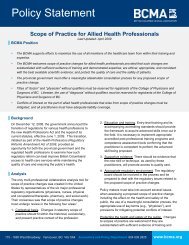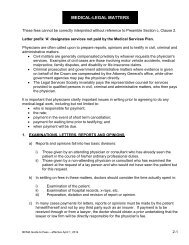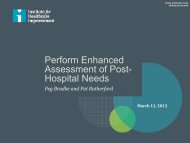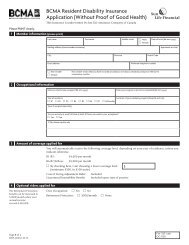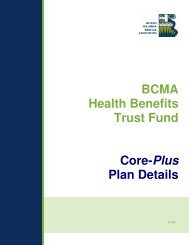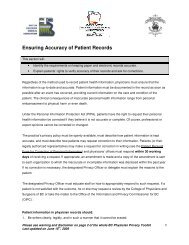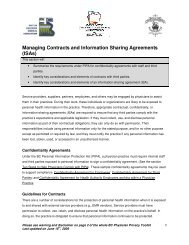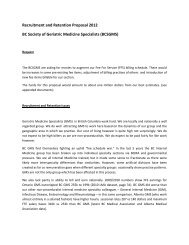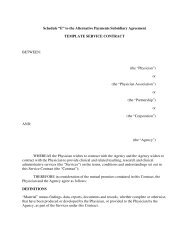Doctors Today and Tomorrow - British Columbia Medical Association
Doctors Today and Tomorrow - British Columbia Medical Association
Doctors Today and Tomorrow - British Columbia Medical Association
Create successful ePaper yourself
Turn your PDF publications into a flip-book with our unique Google optimized e-Paper software.
Physician migration<br />
Gaining physicians through international migration can occur in two ways: either physicians who were previously in<br />
Canada return after working abroad, or internationally-trained physicians immigrate to Canada. Conversely, Canada can<br />
lose physicians through emigration. Over the last three decades, overall net immigration was highest between 2000<br />
<strong>and</strong> 2009; during this period BC had a net gain of 978 physicians, largely due to the significant increase in the number<br />
of new IMGs compared with the previous two decades (Canadian Institute for Health Information, 2010).<br />
Physicians can also be lost or gained through interjurisdictional migration. Physician interjurisdictional migration<br />
data shows that BC, Prince Edward Isl<strong>and</strong>, Ontario, <strong>and</strong> Alberta gained more physicians than they lost in all three<br />
past decades, while Newfoundl<strong>and</strong> <strong>and</strong> Labrador, Nova Scotia, Quebec, Manitoba, Saskatchewan, <strong>and</strong> the Northwest<br />
Territories lost more physicians than they gained (Canadian Institute for Health Information, 2010). Between 2005 <strong>and</strong><br />
2009, net gains in BC ranged from a low of 26 physicians in 2007 to a high of 117 physicians in 2005. In 2009, BC gained<br />
93 physicians through interjurisdictional migration.<br />
Changes in workload<br />
Physicians are engaged in a variety of tasks throughout their work week, including patient care, teaching, research,<br />
administration, <strong>and</strong> continuing professional development. Over the past 20 years, a decline in self-reported hours of<br />
direct patient care (excluding call) has been observed for both sexes <strong>and</strong> across all age groups except for those over 65<br />
years of age in BC (see Figure 7) (Buske, 2010b). The changes in age distribution appears to also have an effect on the<br />
supply of physician services: Watson <strong>and</strong> colleagues found declines between 1993 <strong>and</strong> 2003 in average service volumes<br />
provided by successive cohorts of younger physicians, but increases among older physicians (Watson, Slade, Buske, &<br />
Tepper, 2006).<br />
Figure 6: Average Weekly Direct Patient Care Hours (excluding call), BC, 1986 & 2007<br />
50<br />
45<br />
40<br />
35<br />
Hours<br />
30<br />
25<br />
20<br />
15<br />



